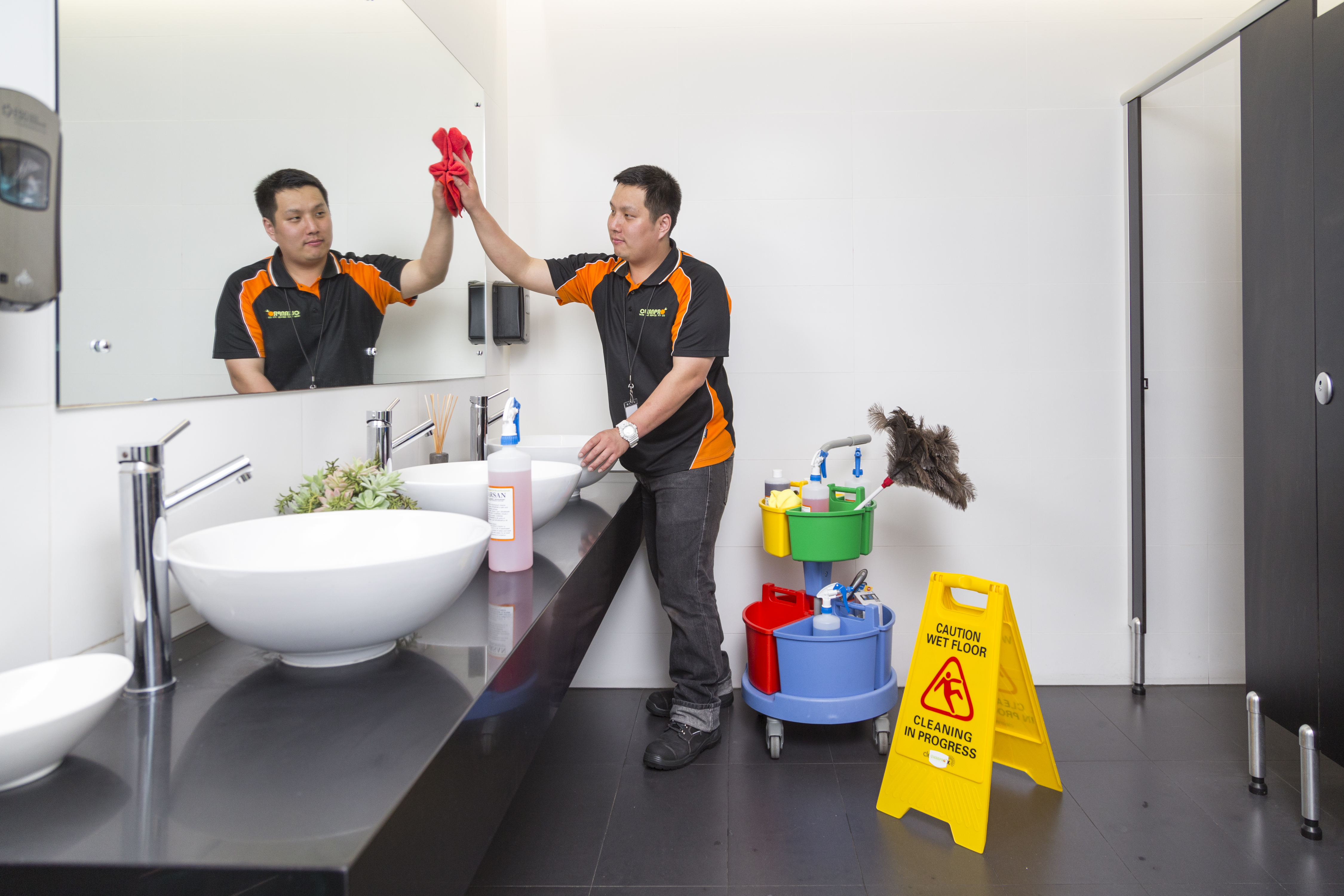The difference between Cleaning and Disinfecting and why you need to do both:
- Cleaning refers to the removal of germs, dirt, and impurities from surfaces. Cleaning does not kill germs, but by removing them, it lowers their numbers and the risk of spreading infection.
- Disinfecting refers to using chemicals to kill germs on surfaces. This process does not necessarily clean dirty surfaces or remove germs, but by killing germs on a surface after cleaning, it can further lower the risk of spreading infection.
Disinfecting your home if someone is sick
As part of your everyday prevention actions clean and disinfect frequently touched surfaces and objects. For example: tables, countertops, light switches, doorknobs, and cabinet handles.
Wear disposable gloves to clean and disinfect.
Clean
- Clean surfaces using soap and water or appropriate cleaning products. Practice routine cleaning of frequently touched surfaces.
- Regularly clean high touch surfaces, such as: tables, doorknobs, light switches, countertops, handles, desks, phones, keyboards, toilets, taps, sinks, etc.
Disinfect
- Use diluted household bleach solutions on appropriate surfaces. Check to ensure the product is not past its expiration date. Unexpired household bleach will be effective against coronaviruses when properly diluted.
Assure you have proper ventilation and follow manufacturer’s instructions for application. Never mix household bleach with ammonia or any other cleanser it can create dangerous, toxic fumes!
To make a bleach solution: mix: ¼ cup of bleach per litre of water.
- Alcohol solutions with at least 70% alcohol.
- Household cleaners and disinfectants:Clean the area or item with soap and water or another detergent if it is dirty. Then, use a household disinfectant.
Follow the instructions on the label to ensure safe and effective use of the product.
Many products recommend:
- Keeping the surface wet for several minutes to ensure germs are killed.
- Precautions such as wearing gloves and making sure you have good ventilation during use of the product.
Soft surfaces
For soft surfaces such as carpeted floor, rugs, and drapes
- Clean the surface using soap and water or with appropriate cleaning products.
- Launder items: Use the warmest appropriate water setting and dry items completely.
Laundry
For clothing, towels, linens and other items
- Wear disposable gloves.
- Wash hands with soap and water as soon as you remove the gloves.
- Do not shake dirty laundry.
- Launder items according to the manufacturer’s instructions. Use the warmest appropriate water setting and dry items completely.
- Dirty laundry from an ill person can be washed with other people’s items.
- Clean and disinfect clothes hampers according to guidance above for surfaces.
Clean hands often
- Wash your hands often with soap and water for 20 seconds.
- Always wash immediately after removing gloves and after contact with an ill person.
- Hand sanitizer: On the whole, hand sanitizers are not as reliable as soap. Sanitizers with at least 60 percent ethanol do act similarly, defeating bacteria and viruses by destabilizing their lipid membranes. But they cannot easily remove microorganisms from the skin. If hands are visibly dirty, always wash hands with soap and water, however is a good alternative on the go.
- Additional key times to clean hands include:
- After blowing one’s nose, coughing, or sneezing
- After using the restroom
- Before eating or preparing food
- After contact with animals or pets
- Before and after providing routine care for another person who needs assistance (e.g. a child)
- Avoid touching your face.
Food
- Stay separated: The ill person should eat (or be fed) in their room if possible.
- Wash dishes and utensils using gloves and hot water or in a dishwasher: clean your hands after handling used food service items.
Trash
- Dedicated, lined trash can: If possible, dedicate a lined trash can for the ill person. Use gloves when removing garbage bags, and handling and disposing of trash. Wash hands afterwards.















